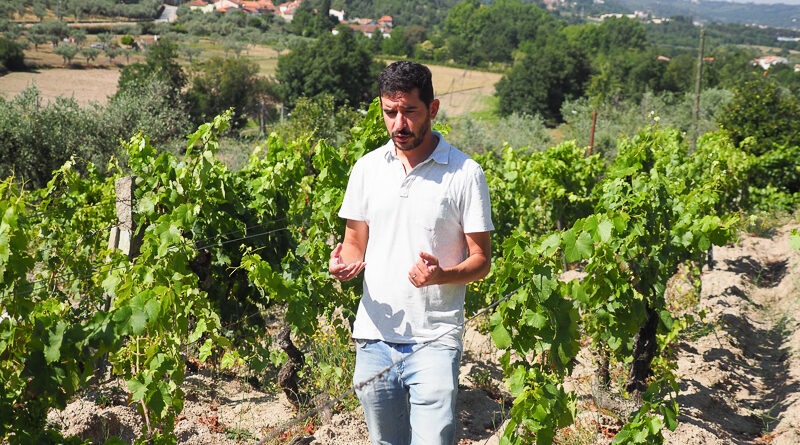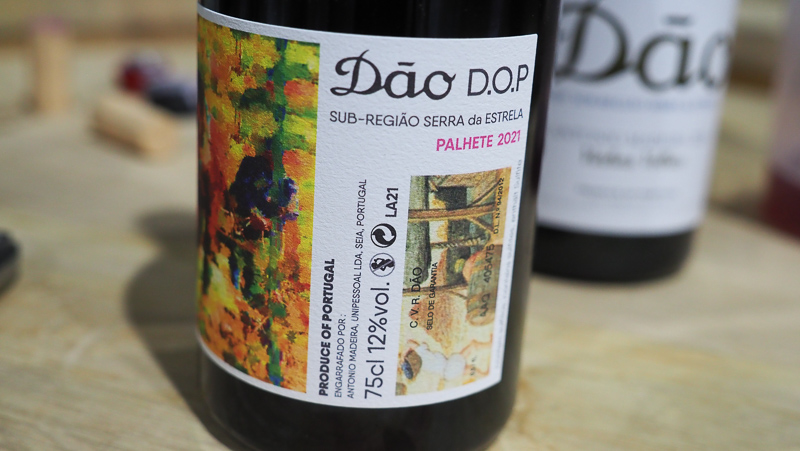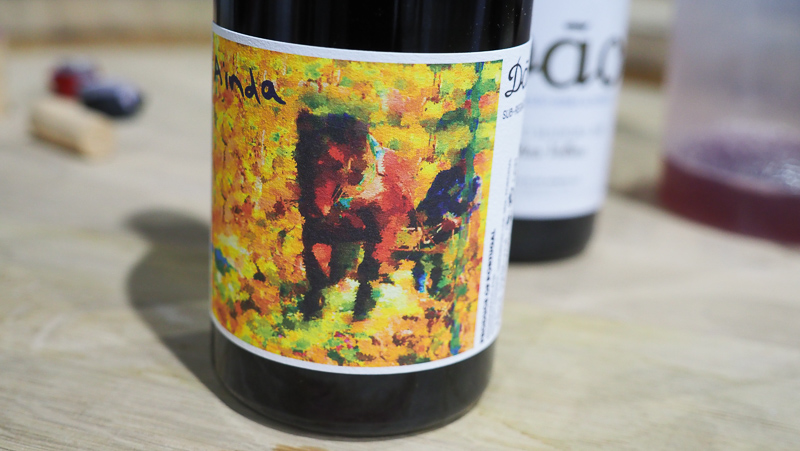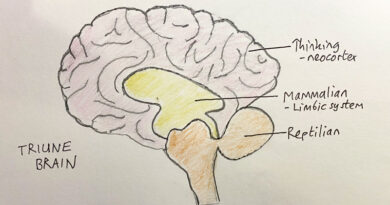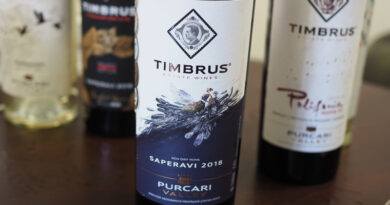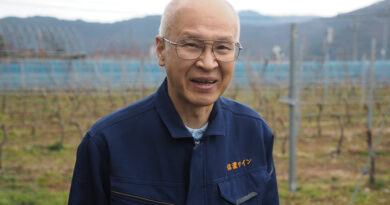Visiting António Madeira, a star producer in Portugal’s Dão region
António Madeira is one of the new stars of Portugal’s Dão wine region, but for the kind actions of a woman on a train in 1970 he might not have made it. His father left Salazar’s Portugal that year, and because it was illegal to leave the country, he had to pay someone to smuggle him over the Spanish border. From here he took a train to Paris, but on the way he had a close scrape. Salazar’s secret police searched the trains for fleeing Portuguese, and top evade them he had to hide in a toilet. The police came along and knocked on the door, but a woman distracted them and told them he’d gone another way.
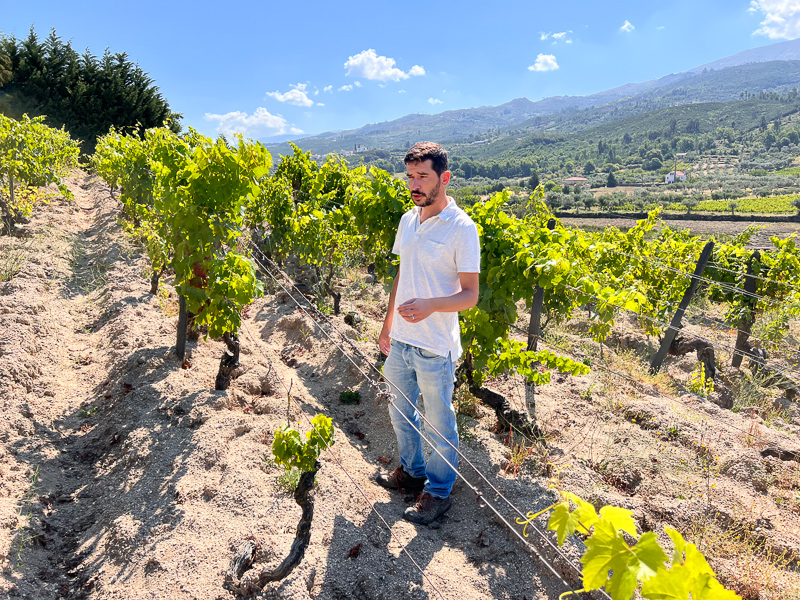
So António was born in Paris in 1978, and became an engineer. His family origins were in the Dão so he returned regularly on holidays. Eventually, he fell in love with wine, but only after he’d met and fallen in love with a girl from the Dão. She was a nurse, but moved to Paris with Antonio where they had the first two of their three children.
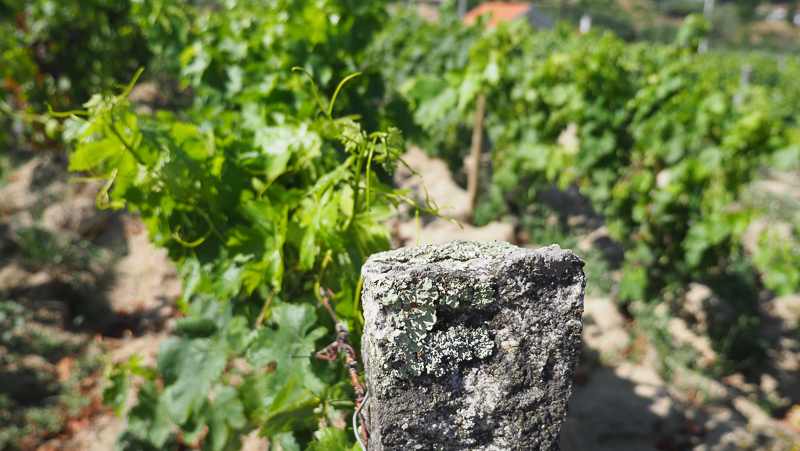
He began making wine in the Dão in 2010, but carried on living in Paris, taking holiday to do the vintage. His father-in-law helped with the running of the vineyards. Eventually, the family moved back to the region in 2017, and António devoted his full attentions to his wine project. This was also when he started biodynamics. He was organic from the beginning but has only been biodynamic since he came to live in Portugal.
He now has 8 hectares of vines spread over 20 plots, and supplements this with grapes bought in for his less expensive wines. While he farms biodynamically, he can’t insist on this for the negociant grapes – he just asks that they don’t use herbicides. The vineyards he farms need 6 full time staff because the viticulture is intensive. ‘This is not a region of monovarietals,’ he says. ‘Together, the different grapes give harmony.’

António Madeira is a big believer in the potential of the Dão. It’s potentially the Grand Cru of Portugal, he says. It was known in the past for its exceptional wines, and there was a much bigger vineyard area here in the past. At the end of the 19th century it became famous in Paris, too: the window afforded by phylloxera, which came here later than in France, allowed these wines to be recognized abroad. ‘That’s why I devoted my life to it,’ he says. One particular inspiration is the old wines from the Centro de Estudos Vitivinicolas do Dão at Nelas. The wines they made in the 1950s, 60s and 70s are in many cases going strong still.
The Nelas school is important for the region: it houses a collection of old varieties and clones in the vineyard that it runs, and Antonio has worked with the director Vanda Batista when he’s been replanting in his vineyards. Vanda is due to retire soon and he’s worried that when she does the school might be closed and then this valuable vine material might be lost. Most vineyards in the region are now planted with just four red and four white varieties, and important varieties from the older vineyards might just disappear.
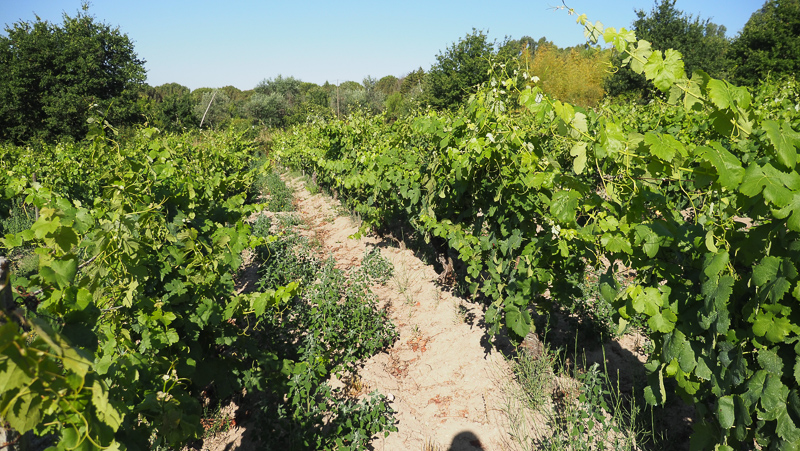
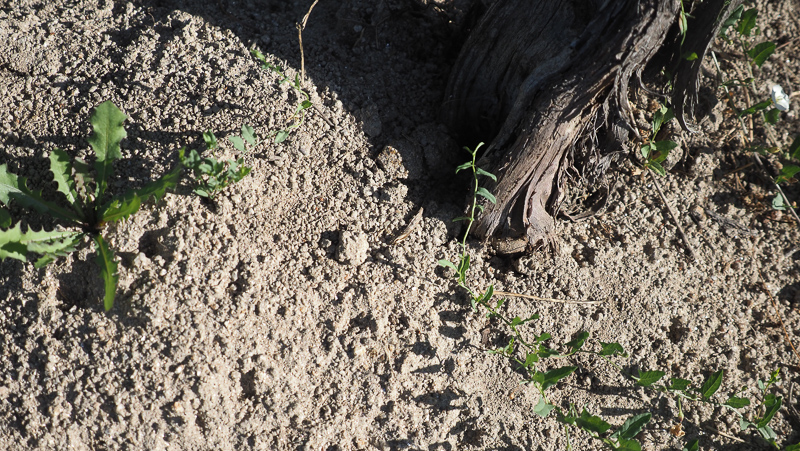
We did a tour of some of the vineyards. The first stop was at a small plot he calls Branco Pinhanços, which is a 50 year old vineyard with white varieties, mainly Encruzado, Bical and Malvasia Fina. These grapes go into the Vinhas Velas Branco.
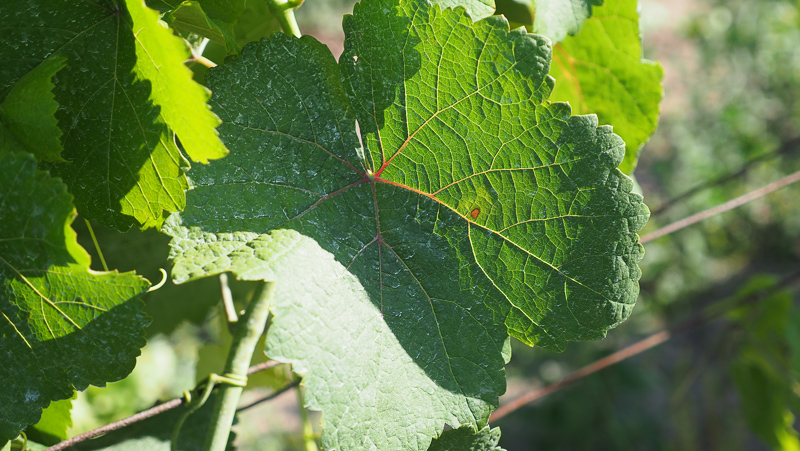
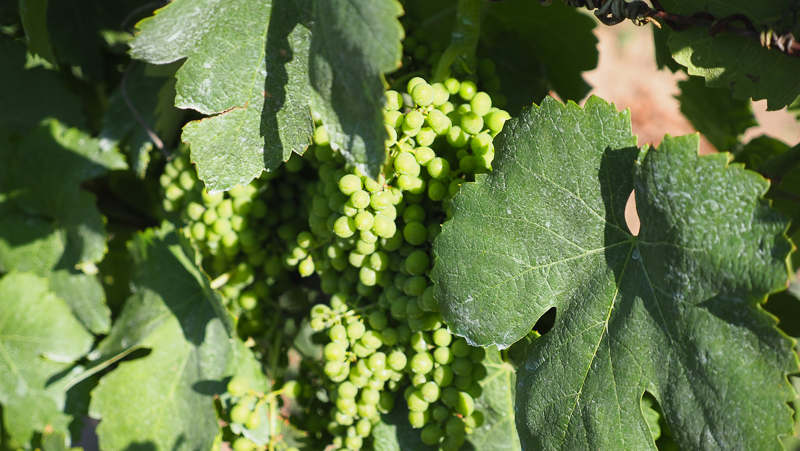
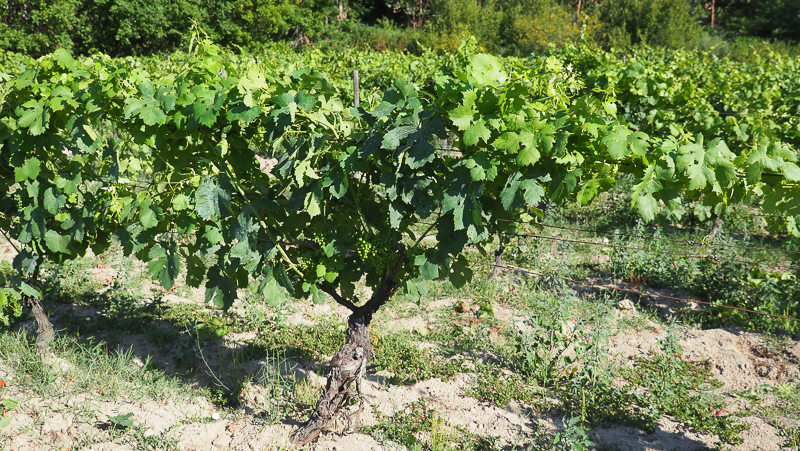
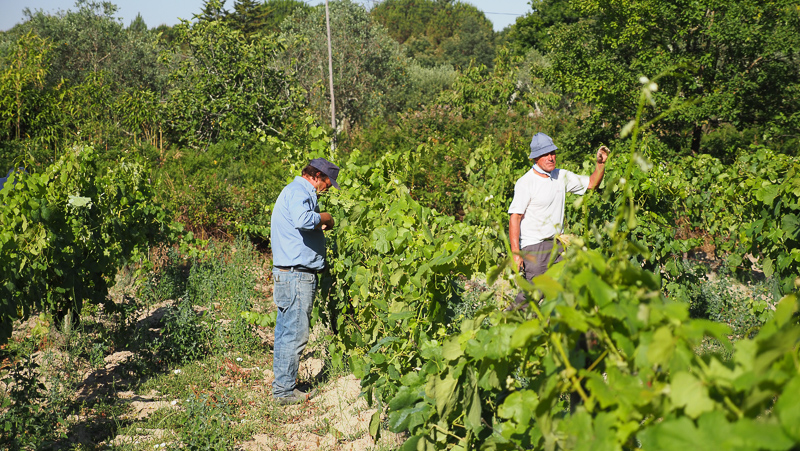
The second stop was at Salgueira, and the grapes from here go into Palheira. It has many varieties, but 60% of the red is Baga. The vineyard is close planted and has to be treated with backpack sprays. The vineyard is ploughed by horse, and they actually own the horse.
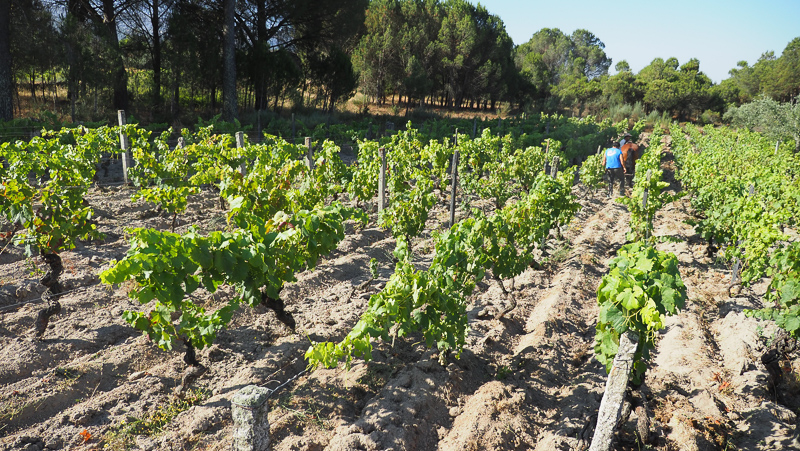
The soils here have more clay than the others and it is a difficult soil to work. It retains too much water and the problem can be that the iron content is reductive and it can become toxic, especially when there are more anaerobic bacteria growing in the soil. So they have been making deeper holes around the vines to let the water drain, and encourage aerobic bacteria.
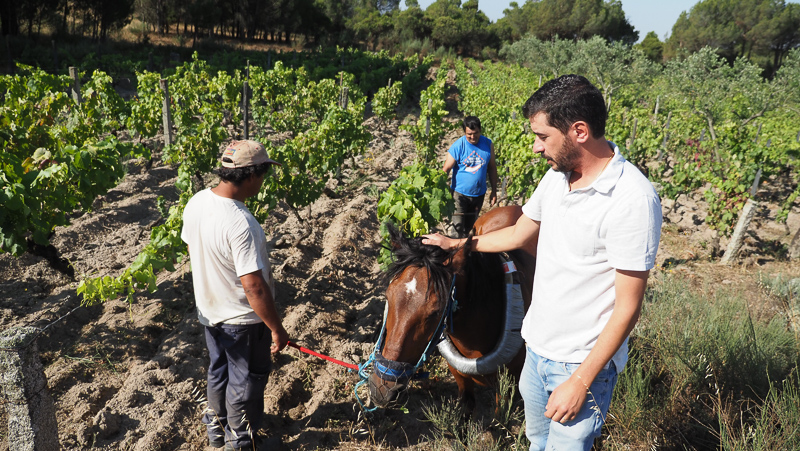
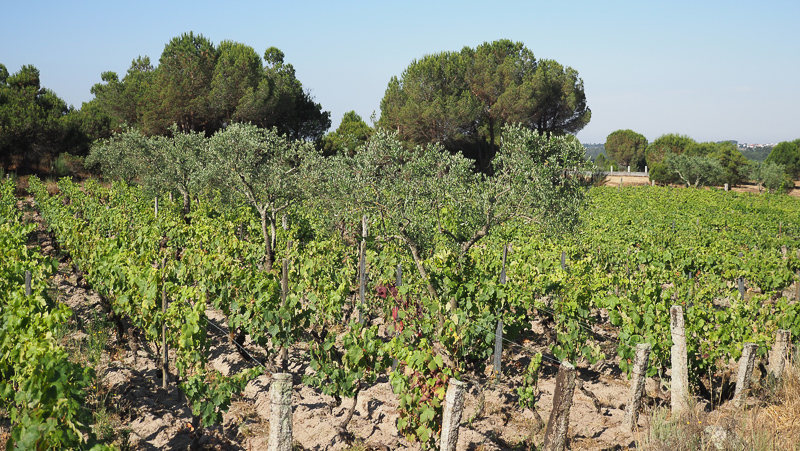
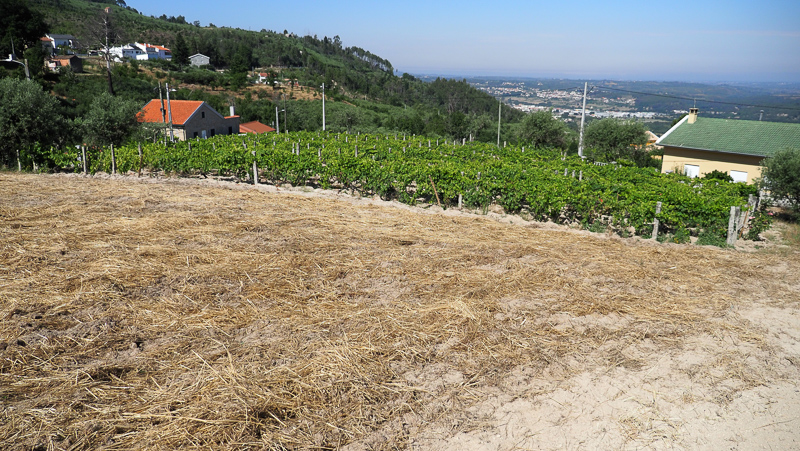
The third vineyard is Viña de Serra, which is one of the single vineyards that they bottle separately. ‘It is my Musigny,’ says António. ‘Very delicate but with power.’ He owns this vineyard and is preparing to plant more vines, including some on terraces. Previously this soils was occupied by pine trees which got burnt in the fires of 2017. The pine trees kill everything in the soil, he says. So for the last two years they have been reclaiming the life in the soil before replanting. When they do, it will be with rootstocks, and later he’ll graft on old vine cuttings.
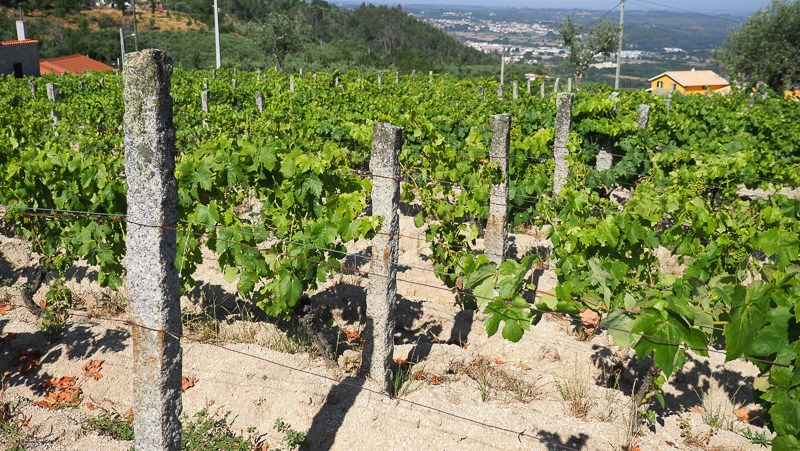
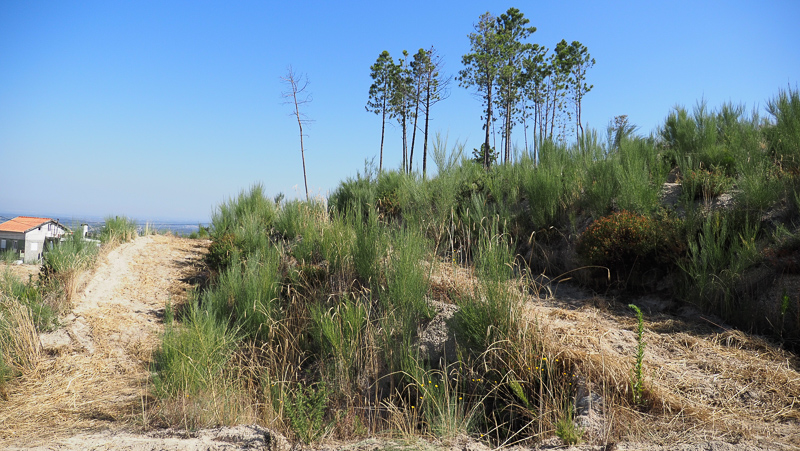
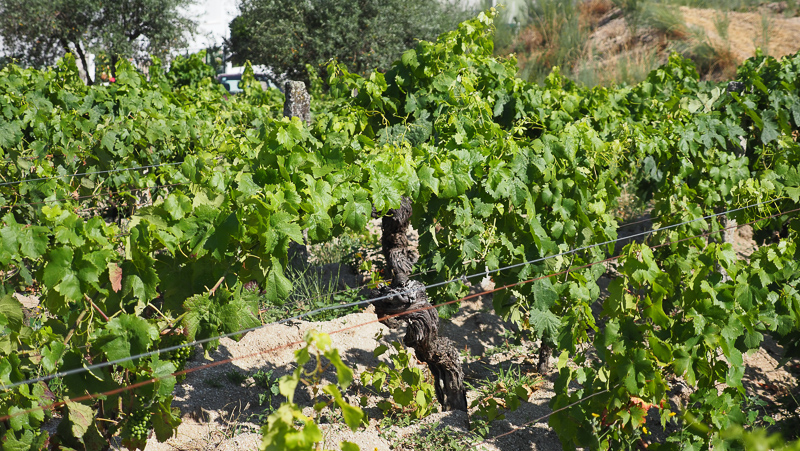
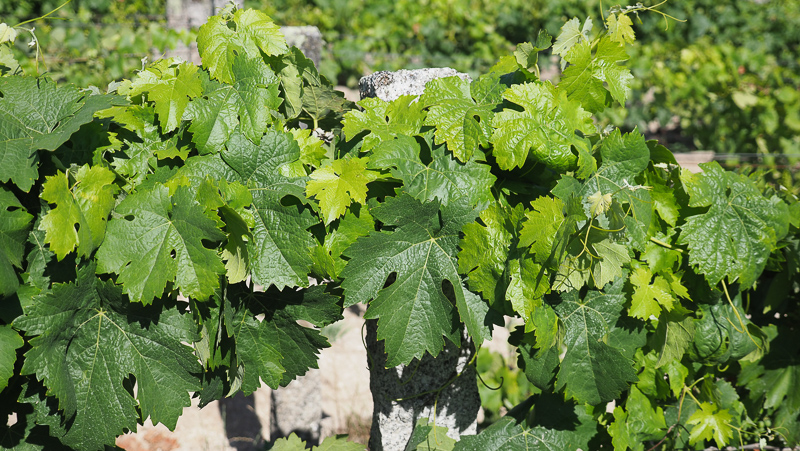
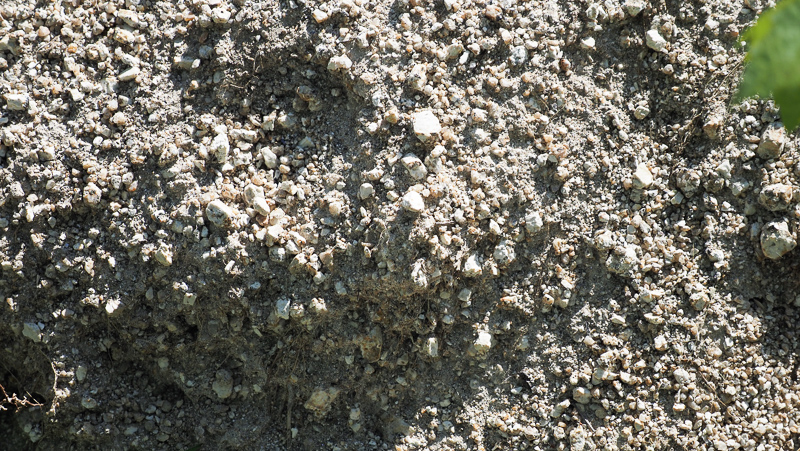
In the soils in the region it’s quite common to see shiny granules: these are aluminium silicate, and this blocks microbial activity. To counter this, he spreads limestone to neutralize the aluminium. He was advised to do this by his biodynamic consultant. You can plant cover crops and spread manure, but the microbes can’t make the nutrients available to the plant unless the aluminium is neutralized. ‘It’s the main problem in the Dão and no one speaks about it,’ says António.

The final vineyard stop is at the Centenaria plot: a remarkable site with very old vines, some of the first planted after phylloxera on American roots.
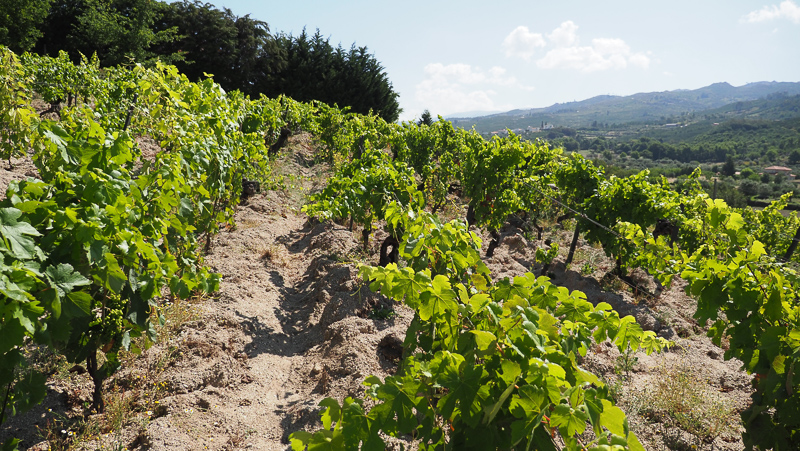
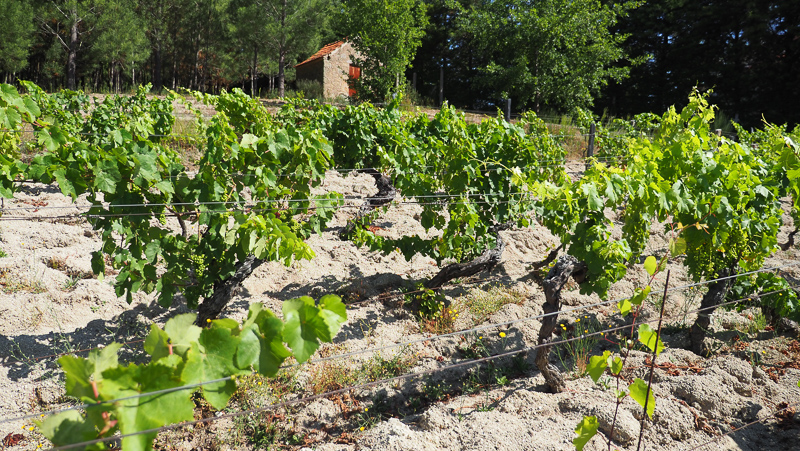
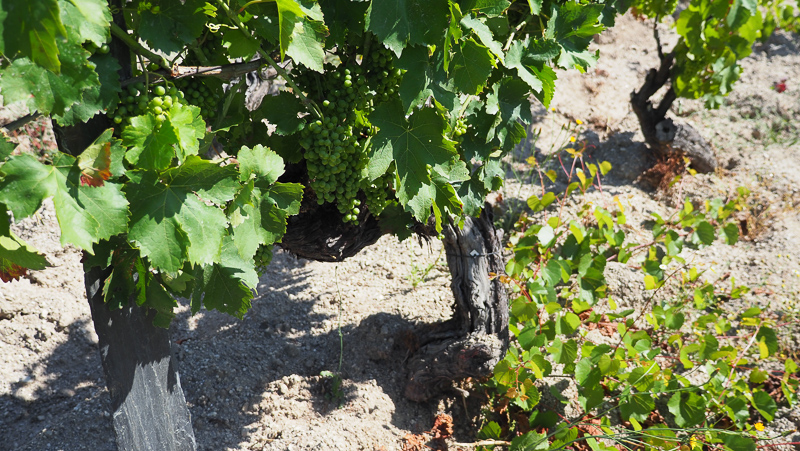
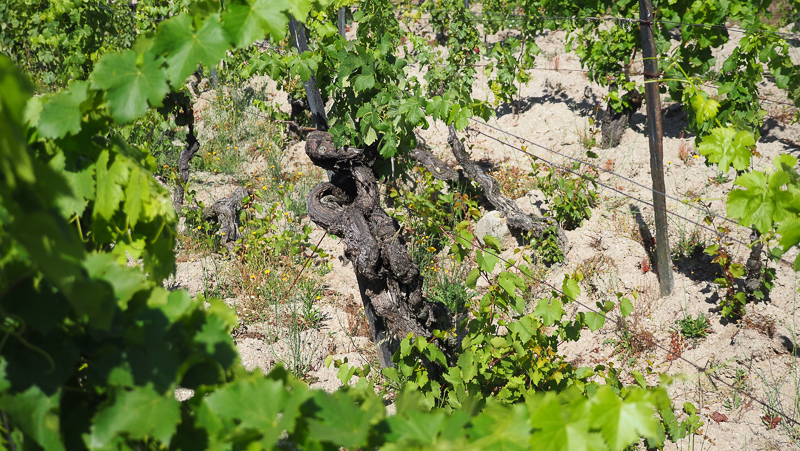
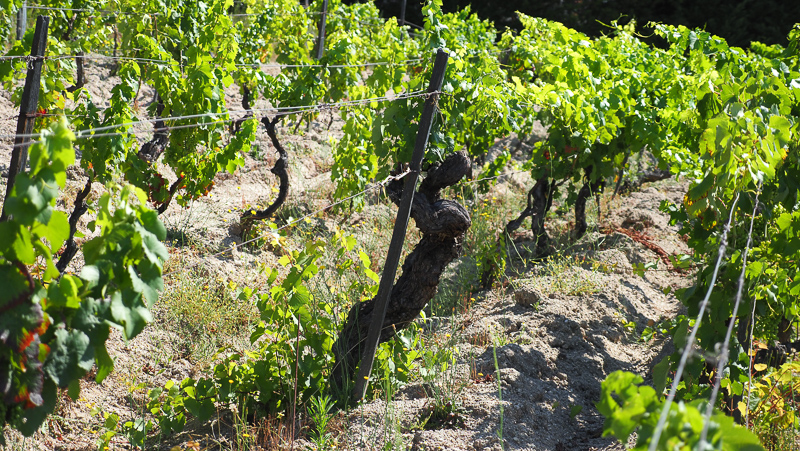
Then we head to the winery, which is currently being extended. His winemaking is quite Burgundian. 2018 was the first vintage made here. Previously Antonio worked in his parent’s garage and also at Pellada. He doesn’t fine or filter any wine in the range, but instead uses the second winter to stabilize the wine naturally. Very low sulfites used here, and almost always later in the winemaking process.


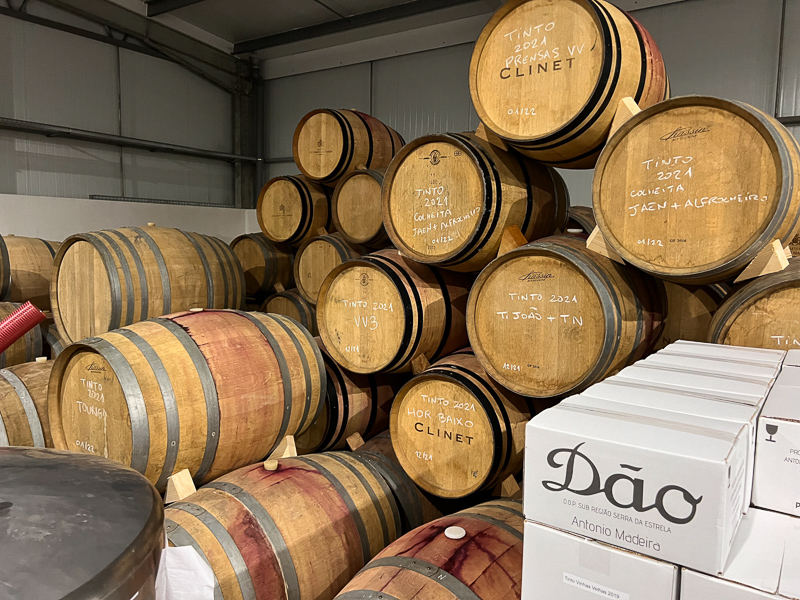
He also allows malolactic fermentation. This changes the acidity of the wine from sharp towards a better terroir description. He initially tried blocking it: he was making the wines at Pellada where they do this. But a friend from Puligny made him question this strategy, and since 2015 he’s always done malolactic.
THE WINES
António Madeira Branco 2021 (barrel sample)
Made from purchased grapes, this is a sample from an old barrel. Mineral, lively and with nice acidity as well as flavours of apple and pear. There’s a saline twist on the finish. A really expressive wine. 91-93/100
António Madeira Branco A Liberdade 2021 (tank sample)
This is from his own younger Encruzado, Bical and Cerceal vines, and is made with no added sulfites. This is one lot of three that will be blended together and it is in stainless steel. Mineral in character with pear and apple notes, and a nice spiciness. ‘No sulfites improves the texture,’ says António. 93-94/100
António Madeira Pinhanços Branco 2021 (this will go into Vinhas Velhas, and is a sample from a 600 litre barrel)
Smoky mineral nose with lovely sweet pear, ripe apple and toast notes, with a touch of sea spray. The palate is fresh and intense but has some delicacy. Very fine with lovely precision. 93-95/100
António Madeira A Palheira 2021 (barrel sample of a component of this wine)
This is from a 100 year vineyard at altitude, and it might become a single-vineyard wine. Wonderful taut, mineral nose with sweet black cherry notes. Brooding with nice spicy hints, with a hint a of chocolate and some great definition. 94-95/100
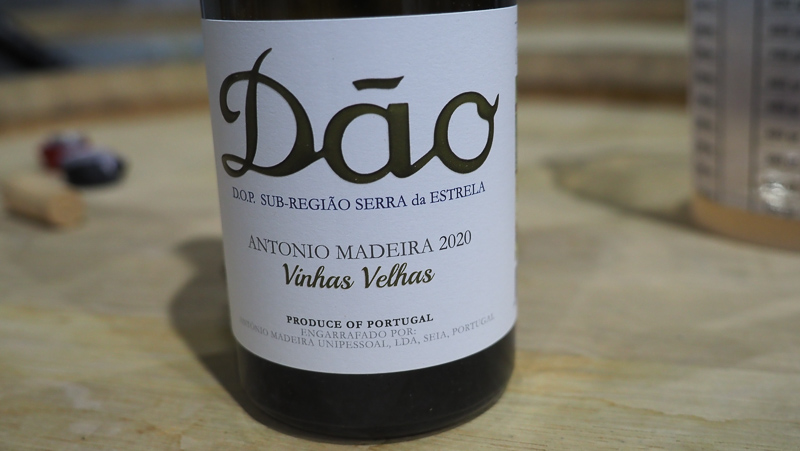
António Madeira Vinhas Velhas Branco 2020 Dão, Portugal
13% alcohol. This is complex and refined with lovely citrus fruit core and some ripe apple and pear notes. It’s quite mineral and layered with depth and complexity and subtle notes of toast, spice and lanolin. The texture and saline minerality here are fantastic. Such a multidimensional wine with lovely depth and weight. 94/100
António Madeira Palhete Ainda 2021 Dão, Portugal
12% alcohol. Ainda means ‘yet’ or ‘still’. 40 different grapes, old vines, purchased grapes, 20-25% white grapes. As the whites ripen sooner than the white it brings some richness and masks the tannins, so it is drinkable sooner than the reds. In the past, people wanted it sooner which is why palhete was such a popular style. Vinified the same way as reds, inspired by Henri Jayer. 100% destemmed and pre-ferment cold maceration at 15 C. Remains macerating for four or five days, starts to ferment, then cut cooling system. Full colour. Wonderful ripe, sweet berry fruit aromatics with some floral cherry notes. Pure, vivid and quite intense with lovely cherry and berry fruit. This is quite full with lots of lovely fruit. There’s still a bit of gas because this has been in stainless steel. Lovely ripe fruit here. 93/100
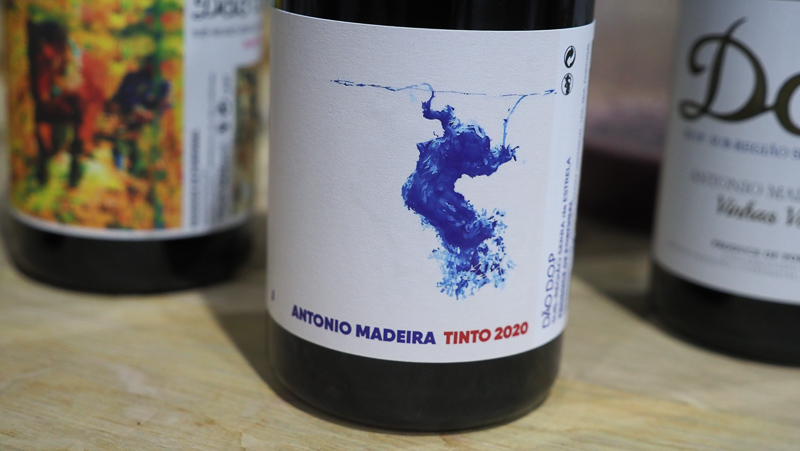
António Madeira Tinto 2020 Dão, Portugal
14% alcohol. This is from purchased grapes, and the label is inspired by the Portuguese tiles. This shows nice concentration of ripe cherry and blackberry fruit with good acidity and nice depth. There’s lovely inky fruit here with some liqourice and red pepper. Structured and forward with ripeness but also freshness. Very expressive and focused with fruit to the fore. 92/100
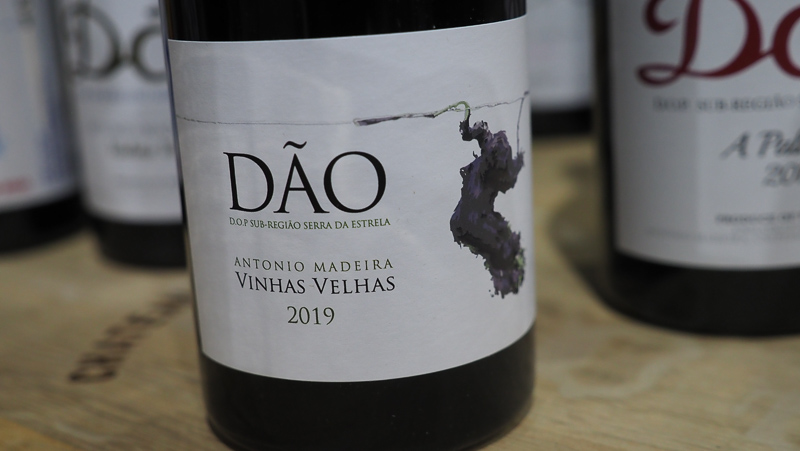
António Madeira Vinhas Velhas 2019 Dão, Portugal
Brooding floral aromatics of red cherries and plums. The palate has freshness and depth with good acidity and a lovely mineral, spicy undertow to the bright plummy fruit. There are so many levels to this: it’s not just about ripe fruit, but there’s also dried herb and mineral complexity. A complex wine, offering fruit, but also savoury complexity and good structure, with potential for development. 94/100
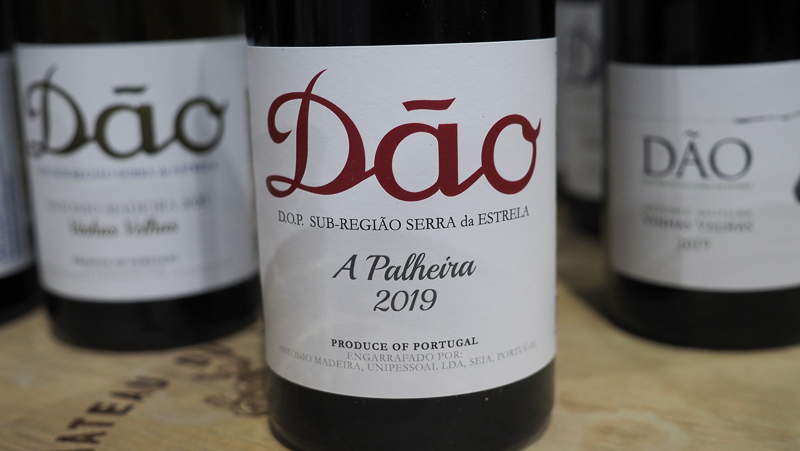
António Madeira A Palheira 2019 Dão, Portugal
Named after the small building for tools in the vineyard, as opposed to a grand Château. It’s a special blend from various single plots. It’s a premier cru where the single vineyards are grand cru and the vinhas velhas is village. Lots of Baga in this. Deeply coloured, but very fresh and expressive. Structured as you might expect of Baga with nice intensity to the cherry and blackberry fruit. There’s some structure here, with amazing layered mineral and saline notes, as well as dried herbs and liqourice, with lovely freshness and intensity. Very fine and expressive but with good concentration and structure. Beautiful stuff. 96/100
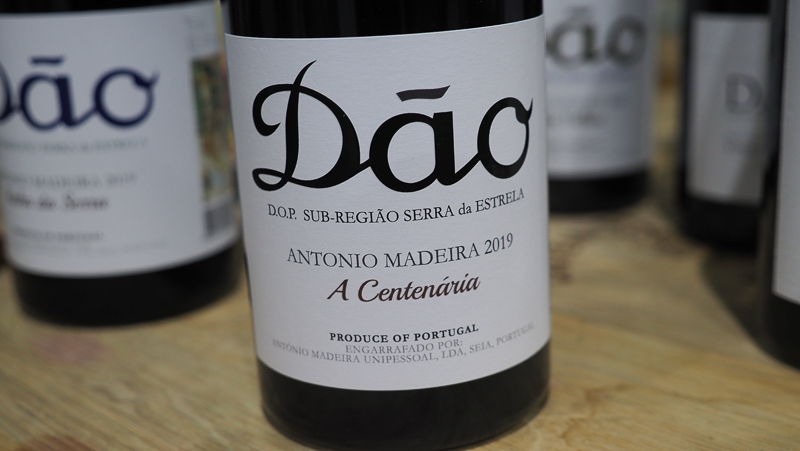
António Madeira Centenaria 2019 Dão, Portugal
13% alcohol. More than 40 different grapes, but around half is Jaen, and there’s quite a bit of Baga. Alone Jaen has no acidity and tension. Baga, here in sandy granitic soils, is too thin alone: it is vertical with no shoulders. In Bairrada, with the clay, it has shoulders. Here it is part of a field blend. This is structured and taut, yet refined with lovely ripe cherry and plum fruit with fine-grained but firm tannins and nice juiciness. There’s some iodine and earth, with complex mineral character, as well as some sweet strawberry notes. Unfurled but packed with energy and interest. This has a real firmness as well as showing lovely fruit. This has a long future ahead of it. 96/100
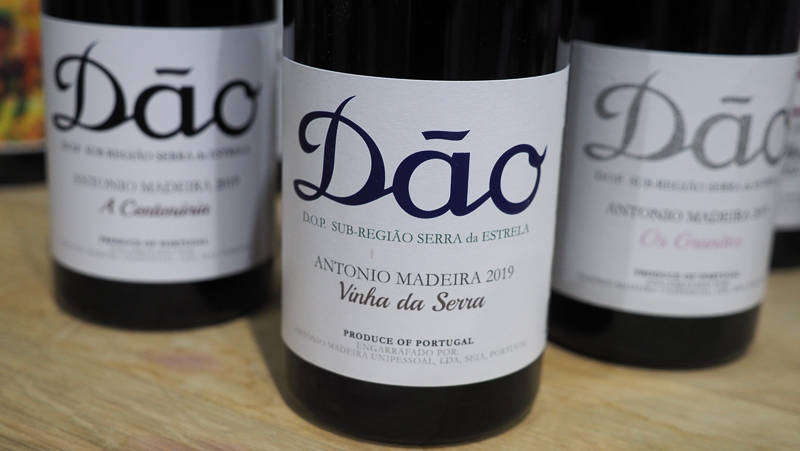
António Madeira Vinha da Serra 2019 Dão, Portugal
This is the small vineyard in the mountain: just 300 bottles (one barrel). Tinta Amarela is the dominant variety (about 70% of the blend), which is the Pinot of the Dão. My musigny, says Antonio. Beautiful aromatics already with sweet floral cherry and berry fruits. The palate is fresh, supple and fine with lovely acidity and fresh cherry and raspberry fruit. The sweet fruit hides the structure and acidity, which is substantial. Has some grip on the finish. This is focused and linear and quite serious, with nice brightness but also a potential for ageing. 97/100
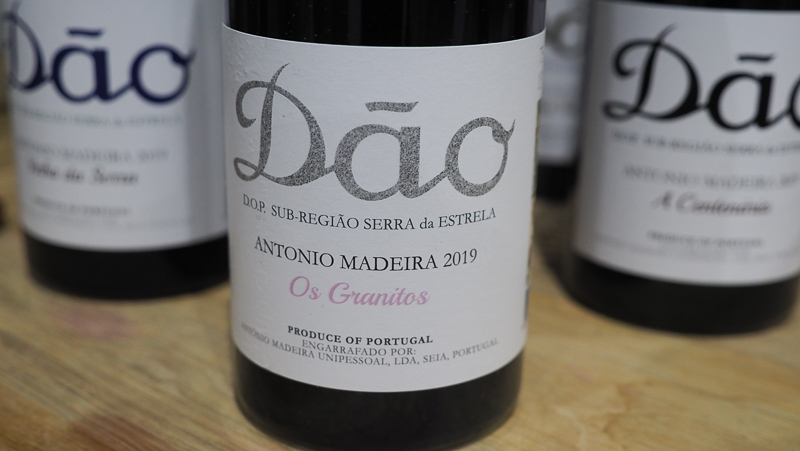
António Madeira Os Granitos 2019 Dão, Portugal
The new single vineyard. 100 year old vines, 0.3 ha. There are different textures and colours of granites in this vineyard: in a small plot like this there are five different soils. Antonio saw the potential early on, but the wine was hidden by dirty reductive notes, but after a few years of work in the vineyard this resolved. First made in 2017, no 2019, so this is the second. Floral, sappy nose with lovely aromatics. No one grape dominates, but this is unusual in having 8% Alicante Bouschet in the blend. The palate is so fresh, bright, direct and elegant with supple raspberry and cherry fruit with some nice green hints, and even a touch of peachy richness. It’s juicy and bright with good acidity and lovely precision. The tannins are nicely resolved: this has focus and purity and a brightness to it. 96/100
Find these wines with wine-searcher.com

